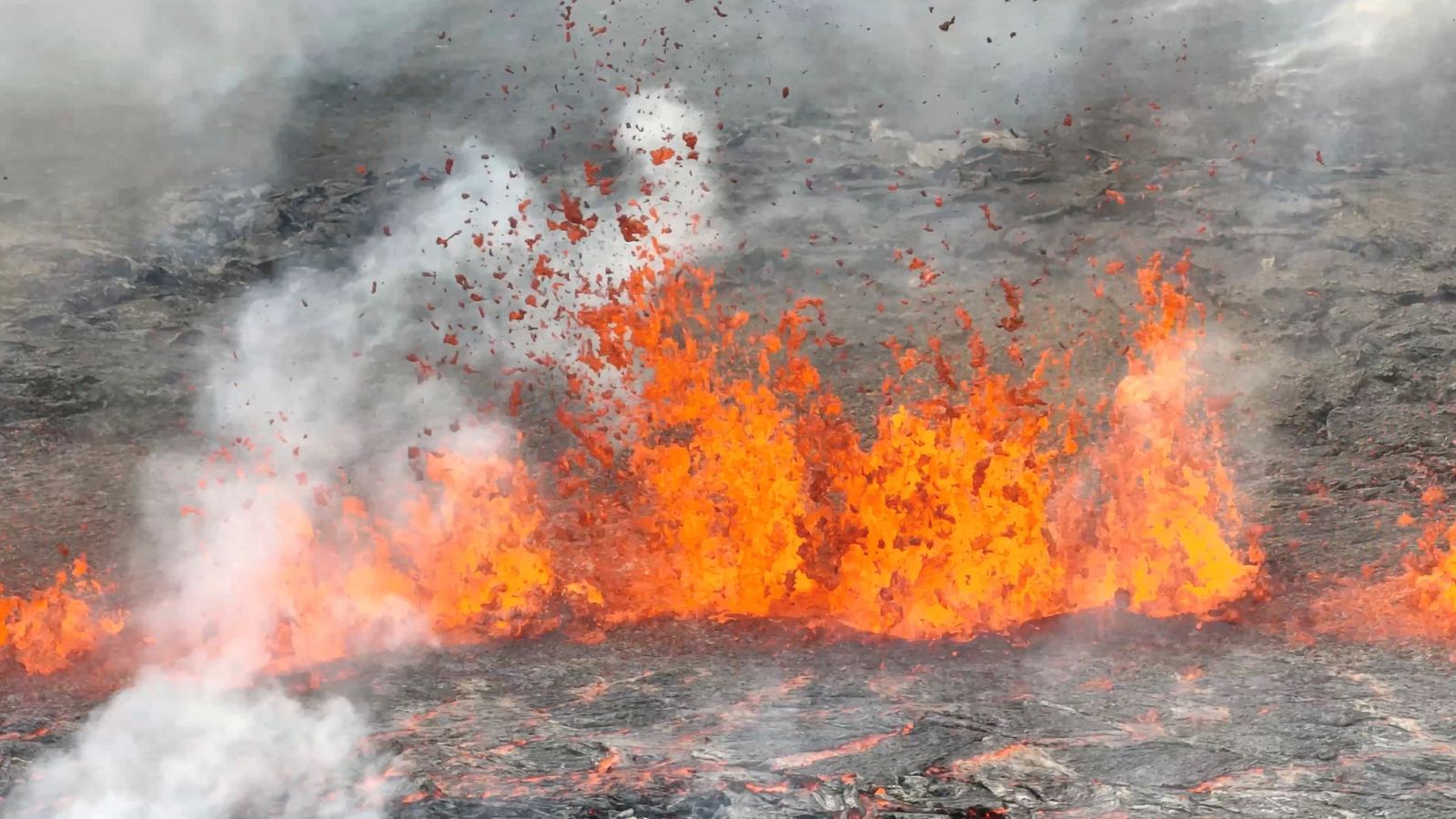Iceland’s Fagradalsfjall volcano, which is around 20 miles away from capital Reykjavik, has begun erupting.
The eruption is in an uninhabited valley near the Litli-Hrutur mountain in the southwest of the country.
It is the second time in less than 12 months that the volcano has erupted, but has managed to cause no damage or disruption despite being close to a major airport.
The Iceland Meteorological Office said the “eruption is small and there is presently no emission of ash to the atmosphere” – adding the lava is emerging as “a series of fountains” from a 200m long fissure.
Officials are asking people not to walk to the site of the eruption, saying there could be “dangerously high levels of volcanic gases” accumulating.
Kristin Gudmundsdottir, a natural hazard specialist at the Met Office, added “it is not a little hike” and that authorities are waiting to “see how the eruption develops”.
An eruption in the same area in 2021 saw lava flows for months, with hundreds of thousands of people heading to see the seismic activity.
Climate change: Icelandic company turning CO2 to stone in bid to combat greenhouse emissions
Brexit and bad planning also to blame for UK fruit and veg shortages, Spain says
Where you should head to survive an apocalyptic nuclear winter, according to scientists
Please use Chrome browser for a more accessible video player
Iceland, which is located above a volcanic hotspot in the North Atlantic, sees an eruption every four to five years on average.
The most disruptive happened in 2010, when the Eyjafjallajokull volcano sent clouds of ash and dust into the atmosphere, halting air travel for days between Europe and North America over concerns the ash could damage jet engines.
More than 100,000 flights were grounded and millions of passengers stranded.







